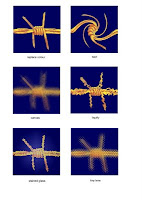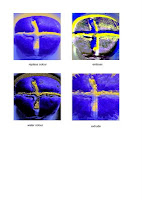


0022 sketches ........................0023 photoshop barbed wire .........0024 photoshop buns
I went back to Exercise 1 as suggested by Sian, to concentrate on more unusual sketches for my crosses. I think my original sketches were a little too 'contrived' and should have been inspired by, or derived from my gathered photographs and images. I particularly like the road marking cross and would not have noticed the worn out patches had I not studied the image whilst sketching it.
The photoshop images were great fun to play with, (with grateful thanks to Catherine for the inspiration). The results were surprising and unpredictable.

























